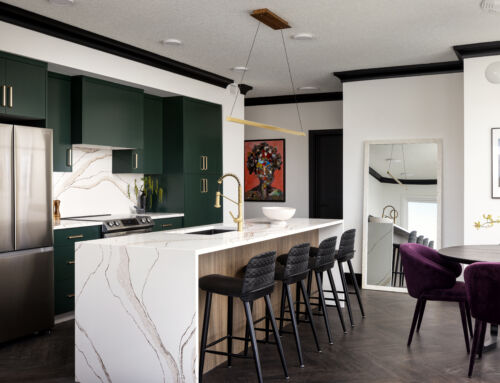While selling homes is central to any builder’s business model, Timber Haus Developments looks deeper.
“We are not just building you a house, we are building a life-long relationship,” says Don Tolsma, president.
The builder’s philosophy prioritizes this connection with the buyer from start-to-finish — and beyond.
“We explain the Alberta New Home Warranty Program to our clients but say ‘don’t worry about that, I’m here, I’m not going anywhere,” says Tolsma. “If you need anything just call me.’”
With that said, Timber Haus has been a member of The Program since the inception of the business in 2017.
“I think it’s a level of comfort,” Tolsma says of The Program. “It’s allowing our clients to see that documentation, the materials, and know there is that guarantee.”
Tolsma and his vice-president John Wilson, a Red Seal carpenter, have a combined 40 years experience in the residential industry, previously playing key roles with Lincolnberg Master Builder, a sister company to Timber Haus.
Presently, Tolsma sits on the board of directors with the Canadian Home Builders’ Association-Edmonton Region and is involved with the Builder Technical Committee and IDEA (Infill Development Edmonton Association).
This insight into the industry keeps Timber Haus well-informed on topics such as building code changes that may be on the horizon.
While Timber Haus has floor plans available for customers to select from, its focus is on custom builds.
“We have passion for custom design,” says Tolsma. “No two houses are the same.”
This work largely takes shape as infills in Edmonton’s inner-city and acreage estates in the surrounding area.
Homes sold through Timber Haus range from the mid-$300,000s to more than $1M.
The builder’s processes give the homeowner confidence, starting with a lunch to meet the team working on their build.
“That way they feel comfortable right off the hop,” says Tolsma, adding that the lines of communications are ongoing.
“You establish trust,” he adds.
Tolsma started the frame stage walk-through as a standard practice at Lincolnberg and has carried this over to Timber Haus. This step gives customers the chance to make changes to characteristics, such as light switch placement, late in the process.
“Right from when the home is framed, we have established that relationship,” says Tolsma.
“Customer service is No. 1.”
Lincolnberg has earned multiple awards through CustomerInsight recognizing its excellence in customer service every year since 2015.
Timber Haus uses the same service program Tolsma developed while at Lincolnberg.
Depending on square footage, construction of a custom infill can take 12 months or beyond.
Timber Haus typically takes five to seven months.
Having worked for a production builder, where tight timeframes are integral to the business, Tolsma “brings that experience to the infill market.”
“Customers are surprised, wondering how we can complete it so fast,” he adds. “We have the skill to do it. We know the process.”
One factor in achieving this is when it comes to trades, Timber Haus has a leg up.
Tolsma played a role in starting several of the trades the company uses. These trades work exclusively for Timber Haus and Lincolnberg and provide a substantial advantage with timelines and service.
“We are not calling these trades to get them to work for us whenever they have time,” says Tolsma. “When we are ready to go, our trades are ready to go, as well.”
Working with the same trades consistently, Timber Haus is also familiar with the quality of their work.
While many custom builders sub-contract designs from a drafting firm, Timber Haus’s team is in-house.
A $2,500 payment gets this process started. The customer meets the head of the drafting team for a “very hands-on approach to learn the wants and needs of the home owner,” says Tolsma.
This is followed by creation of a 2-D rendering of their elevation and a blackline drawing of the interior.
“They may tweak it here and there and then after that, if they want to take to contract, that $2,500 design fee becomes their initial deposit.”
The turn-around for their designs is about a week and a half. Builders who use an outside firm for this take about three weeks, says Tolsma.
In addition to conventional homes, his company has the skill and expertise to build garden homes. In fact, Timber Haus is one of the most active builders of garden homes in the Edmonton area, Tolsma says.
It’s a complicated process.
“There is a lot of relocation of services, gas lines power lines … a lot of technical things involved that shies other companies away from doing this,” he says.
Garden homes start at $200,000 and have been popular in multi-generational living arrangements and for others looking to offset their mortgage by renting these homes to a tenant.
“They are becoming more and more popular as things go on,” says Tolsma.
Michelle Rogers, account manager at the Alberta New Home Warranty Program, lauds the areas in which Timber Haus has decided to focus.
“The emphasis that Timber Haus has on quality, flexibility, customer experience and trust are just a few of the many great qualities that we value about our partnership with them,” says Rogers. “The passion, personalization and excitement that they bring to every interaction is tangible as well as contagious; and they are extremely focused on building not just a house, but a home.”







Connect